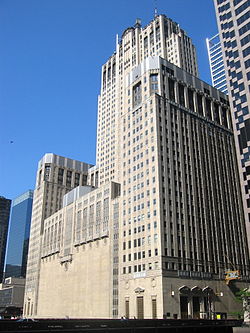
Mary Garden was a Scottish-American operatic lyric soprano, then mezzosoprano with a substantial career in France and America in the first third of the 20th century. She spent the latter part of her childhood and youth in the United States and eventually became an American citizen, although she lived in France for many years and eventually retired to Scotland, where she spent the last 30 years of her life and died.

Lyric Opera of Chicago is one of the leading opera companies in the United States. It was founded in Chicago in 1954, under the name 'Lyric Theatre of Chicago' by Carol Fox, Nicola Rescigno and Lawrence Kelly, with a season that included Maria Callas's American debut in Norma. The company was re-organized by Fox in 1956 under its present name and, after her 1981 departure, it has continued to be of one of the major opera companies in the United States. The Lyric is housed in a theater and related spaces in the Civic Opera Building. These spaces are now owned by the Lyric.
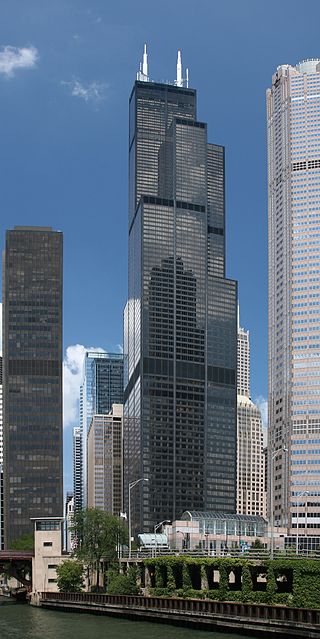
The buildings and architecture of Chicago reflect the city's history and multicultural heritage, featuring prominent buildings in a variety of styles. Most structures downtown were destroyed by the Great Chicago Fire in 1871.
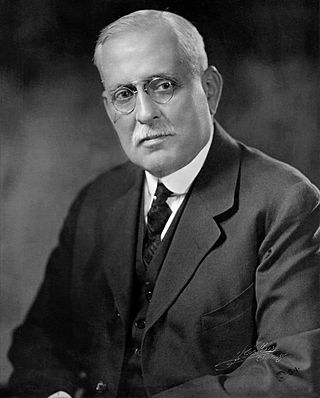
Samuel Insull was a British business magnate. He was an innovator and investor based in Chicago who helped create an integrated electrical infrastructure in the United States. Insull created holding companies that purchased utilities and railroads. Insull was responsible for the building of the Chicago Civic Opera House in 1929. Due to the Great Depression, his vast Midwest holding company empire collapsed, and he was accused of profiting personally by selling worthless stock to unsuspecting investors who trusted him because of his position and reputation. Following a seven-week trial, he and 16 co-defendants were acquitted of all charges after two hours of jury deliberation.
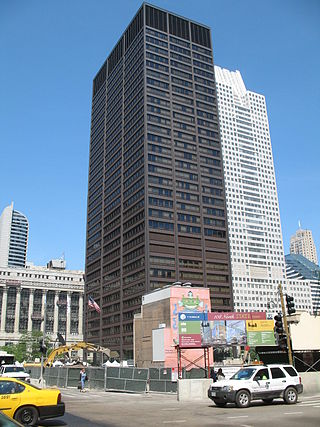
The Richard J. Daley Center, also known by its open courtyard Daley Plaza and named after longtime mayor Richard J. Daley, is the premier civic center of the City of Chicago in Illinois. The Center's modernist skyscraper primarily houses offices and courtrooms for the Cook County Circuit Courts. It is adjacent to the City Hall-County Building. The open granite-paved plaza used for gatherings, protests, and events is also the site of the Chicago Picasso, a gift to the city from the artist.

Jules Guérin was an American muralist, architectural delineator, and illustrator. A painter and widely published magazine illustrator, he gained prominence for his architectural work such as in the 1906, Plan for Chicago, and for the large murals he painted in many well-known public structures such as the Lincoln Memorial.

Graham, Anderson, Probst & White (GAP&W) was a Chicago architectural firm that was founded in 1912 as Graham, Burnham & Co. This firm was the successor to D. H. Burnham & Co. through Daniel Burnham's surviving partner, Ernest R. Graham, and Burnham's sons, Hubert Burnham and Daniel Burnham Jr. In 1917, the Burnhams left to form their own practice, which eventually became Burnham Brothers, and Graham and the remaining members of Graham, Burnham & Co. – Graham, (William) Peirce Anderson, Edward Mathias Probst, and Howard Judson White – formed the resulting practice. The firm also employed Victor Andre Matteson.

333 South Wabash is a 600-ft, 44-story skyscraper located at 333 South Wabash Avenue in the central business district of Chicago, Illinois.

The Field Building, also known as the LaSalle National Bank Building and Bank of America Building is an art deco office building at 135 South LaSalle Street in the Loop community area of Chicago, Illinois in the United States. The building was designated a Chicago Landmark February 9, 1994.

The Civic Opera House, also called Lyric Opera House is an opera house located at 20 North Wacker Drive in Chicago. The Civic's main performance space, named for Ardis Krainik, seats 3,563, making it the second-largest opera auditorium in North America, after the Metropolitan Opera House. Built for the Chicago Civic Opera, it has been home to the Lyric Opera of Chicago since 1954 and the Joffrey Ballet since 2021. It is part of a complex with a 45-story office tower and two 22-story wings, known as the Civic Opera Building that opened November 4, 1929 and features Art Deco details.

The Jewelers Row District is a historic district in the Loop community area of Chicago, Illinois in the United States. Running along Wabash Avenue, primarily between East Washington Street and East Monroe Street, the buildings in the district were built between 1872 and 1941 and were designed by many architects, including Graham, Anderson, Probst & White, John Mills Van Osdel, Adler & Sullivan, Alfred Alschuler, D. H. Burnham & Co., and Holabird & Roche in a variety of styles, including Italianate, Chicago School, and Art Deco. The buildings are variously loft buildings used for small manufacturers, mercantile buildings, office buildings and early skyscrapers.

The Metropolitan Tower, developed by Metropolitan Properties of Chicago, is a skyscraper located at 310 S. Michigan Avenue in Chicago's East Chicago Landmark Historic Michigan Boulevard District in the Loop community area in Cook County, Illinois, United States and has been renovated as a condominium complex with 242 units. Residences range in size from 1,200 square feet (110 m2) to 4,000 square feet (370 m2). Penthouses feature 360 degree city views and private elevators. Prices run from $300,000 for a 762 square feet (70.8 m2) one-bedroom unit to $1.365 million for a 1,932 square feet (179.5 m2) three-bedroom. The Metropolitan Tower was also for a time home to a branch of Chase Bank. The space now houses a branch of CVS.
The Civic Opera Company (1922–1931) was a Chicago company that produced seven seasons of grand opera in the Auditorium Theatre from 1922 to 1928, and three seasons at its own Civic Opera House from 1929 to 1931 before falling victim to financial difficulties brought on in part by the Great Depression. The company consisted largely of the remnants of the Chicago Opera Association, a company that produced seven seasons of grand opera in the Auditorium Theatre from 1915 until its bankruptcy in 1921.
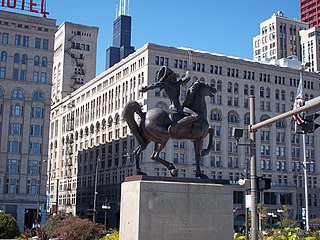
Two grand opera companies in Chicago, Illinois, have gone by the name Chicago Grand Opera Company during the first half of the 20th century. Like many opera ventures in Chicago, both succumbed to financial difficulties within a few years, and it wasn't until 1954 that a lasting company was formed in the city.

The Exelon Pavilions are four buildings that generate electricity from solar energy and provide access to underground parking in Millennium Park in the Loop community area of Chicago in Cook County, Illinois, United States. The Northeast Exelon Pavilion and Northwest Exelon Pavilion are located on the northern edge of the park along Randolph Street, and flank the Harris Theater. The Southeast Exelon Pavilion and Southwest Exelon Pavilion are located on the southern edge of the park along Monroe Street, and flank the Lurie Garden. Together the pavilions generate 19,840 kilowatt-hours (71,400 MJ) of electricity annually, worth about $2,350 per year.

The State Line Generating Plant was a coal-fired electrical generating station that operated from 1929 until 2012. It was located on the coast of Lake Michigan, bordering the state line separating Indiana from Illinois but within the corporate limits of Hammond, Indiana. In 2008–09, it had a year-round capacity of 515 megawatts.

Ernest Robert Graham was an American architect.
The Chicago Lighting Institute opened on April 11, 1930 as an educational and marketing association for the lighting industry in the Midwest. Supported by five full corporate members and fifty associate corporate members, it sought to acquaint architects, interior designers, electrical engineers, urban planners and the general public with the latest developments and applications in lighting. It was the largest cooperative Institute fostering better lighting practices in the United States and, as such, was the pioneer U.S. institution promoting appropriate use of light in the earlier years of the lighting industry. In 1968, after 38 years of service, the Institute merged with the Chicago Electric Association.
Alfred P. Shaw was an American architect based in Chicago, Illinois. He worked at Graham, Anderson, Probst & White, then in various partnerships, and headed his Alfred Shaw and Associates firm. He was a director for the American Institute of Architects. The Smithsonian has a collection of his documents including correspondence with Alexander Calder.
